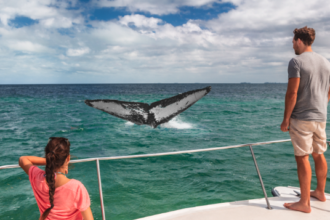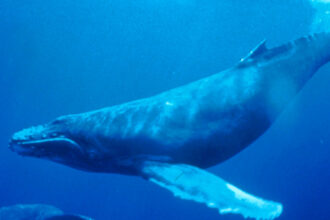What Do Whales Eat?
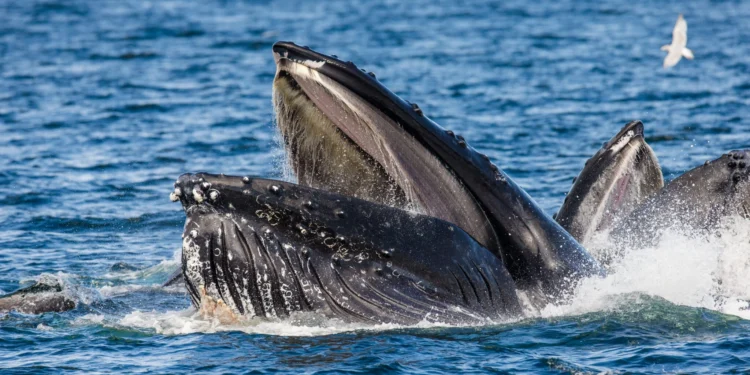
Blue whales stand as Earth’s largest creatures and devour up to four tonnes of krill each day. This incredible consumption highlights the wide range of dietary preferences among whales. These majestic marine mammals have developed distinct eating habits. Blue whales feast on tiny krill, while killer whales hunt larger prey like seals and even other whales.
Each whale species has its own unique dietary requirements. Baleen whales eat up to 4% of their body weight daily during feeding season. Sperm whales show their enormous appetite by consuming around 220 billion pounds of squid every year. These feeding patterns have evolved naturally and help each species thrive in their specific ocean environments.
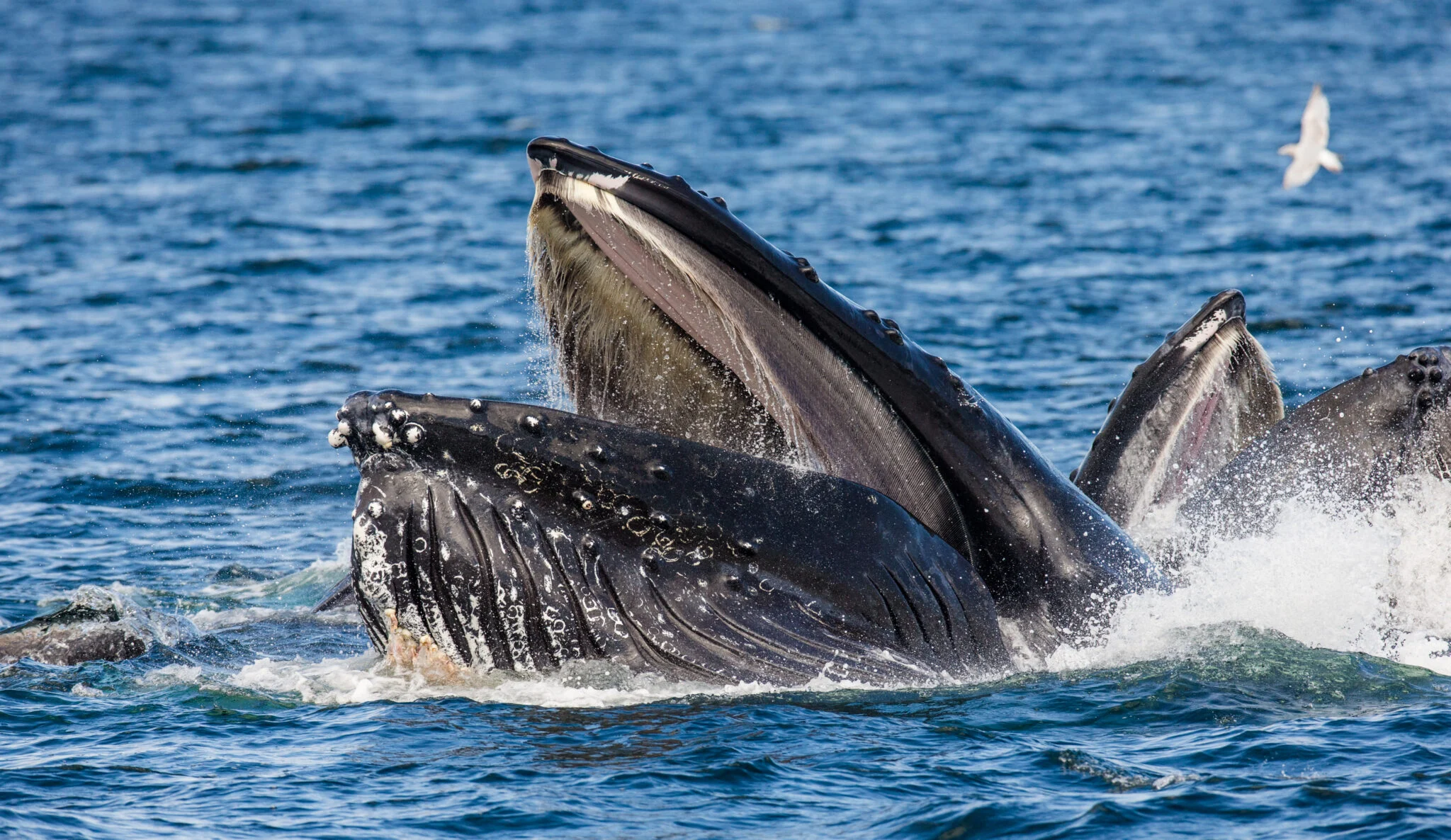
Table of Contents
- 1 Basic Types of Whale Feeding
- 2 Fascinating Feeding Techniques
- 3 How Different Whales Hunt
- 4 Amazing Feeding Adaptations
- 5 Daily Feeding Patterns
- 6 Some FAQs about what do whales eat:
- 6.1 Do whales eat big fish?
- 6.2 Are whales carnivorous?
- 6.3 What is the main predator of whales?
- 6.4 Does a whale eat sharks?
- 6.5 What is a whale’s favorite food?
- 6.6 Do whales go to sleep?
- 6.7 Do whales see humans as food?
- 6.8 Why are orcas called killer whales?
- 6.9 What are 5 interesting facts about whales?
Basic Types of Whale Feeding
Marine scientists group whales into two distinct categories based on how they feed: baleen whales and toothed whales. Each group has developed unique structures and techniques to catch their favorite prey.
Filter feeding with baleen
Baleen whales have amazing filtering structures made of keratin – the same protein in your fingernails. These giants have 270 to 400 baleen plates that hang from their upper jaws. Each plate’s inner edge has a hairy fringe that connects with others to create a highly effective filtering mat.
Different baleen whale species filter their food in unique ways. Right whales swim with their huge, arched mouths open to filter prey continuously – a technique called skim-feeding. Gray whales use their rough baleen to filter through seafloor sediment, so people often call them “silt sifters”. Rorquals, like humpback whales, prefer to gulp their food. Their pleated throats expand to take in massive amounts of water before pushing it out through their baleen.
Hunting with teeth
Toothed whales catch their prey more directly. These skilled hunters, which include all dolphins and porpoises, use their many conical or wedge-shaped teeth – sometimes more than 300 – to catch their food. They rely on echolocation to hunt successfully. This sophisticated system lets them send out clicking sounds and understand the returning echoes to find prey.
These social hunters work together in fascinating ways to catch their meals. A common strategy involves the pod surrounding a school of fish and squeezing them into a dense “bait ball” before taking turns to feed. Orcas and bottlenose dolphins have become skilled at beach feeding – they chase their prey onto shorelines.
Sperm whales show incredible hunting abilities. They head over to depths between 300 and 800 meters to find food, and some dives reach 1 to 2 kilometers deep. These amazing creatures can stay underwater for more than an hour as they hunt their favorite prey – medium-sized squid and sometimes even giant squid.
Fascinating Feeding Techniques
Whales show amazing cleverness in their feeding strategies. These ocean giants use smart techniques that highlight their intelligence and ability to adapt. Their methods have evolved to help them hunt successfully in waters of all types.
Bubble net feeding
Humpback whales excel at bubble net feeding, a smart hunting technique that shows how well they solve problems. These clever creatures release precise circular bubbles underwater that trap their prey effectively. Their coordinated efforts boost krill density about seven times, which makes feeding much easier.
The whales learn this technique rather than being born with it. They pick up this skill by watching others and practicing, as each generation passes the knowledge to the next. Up to twenty whales work together in this group feeding method. They coordinate their moves through sounds to make the strategy work.
Lunge feeding
Lunge feeding stands out as one of the most energy-demanding feeding behaviors any animal can do. Rorqual whales speed up to 3 meters per second and open their mouths about 90 degrees. Their throat pleats then stretch to four times their normal size to handle the huge amount of water.
These giants time everything perfectly. Blue whales that chase krill open their mouths at top speed and close them as they slow down. This technique lets them swallow water volumes up to 140% of their body weight. The massive water intake slows them down because of increased drag.
Bottom feeding
Bottom feeding shows how whales adapt to find food near the seafloor. Gray whales act like nature’s excavators – they stir up sediment that cycles nutrients through the water column. We watched these bottom-feeders target invertebrates on the seafloor, though they can still filter feed like other baleen whales.
Humpback whales shine at bottom-feeding too, especially in the southern Gulf of Maine. They spend more time feeding near the ocean floor than doing other feeding moves. These smart creatures use three different bottom-side-roll feeding types: simple side-rolls, side-roll inversions, and repetitive scooping. Most of this happens between 11 PM and 4 AM, with each whale doing about 30 rolls every hour.
How Different Whales Hunt
Nature has gifted three distinct whale species with some of the most sophisticated hunting strategies. These marine mammals have adapted perfectly to their ecological niches. Their unique approaches to finding and catching prey show how remarkably they have evolved.
Blue whale feeding strategy
Blue whales stand out among marine mammals for their feeding efficiency. These giants can accelerate from 2.2 mph to 9 mph during their feeding lunges. They take in water volumes up to 130% of their body weight. Their calculated approach to feeding shows impressive energy management, as each successful lunge provides up to 237 times more energy than expended.
These massive creatures carefully assess krill patches before feeding. They skip smaller concentrations that wouldn’t justify the energy cost of stopping and accelerating again. Their selective feeding behavior enables them to consume up to 4 tons of krill daily. They focus on dense patches to maximize their energy return.
Killer whale hunting tactics
Killer whales show extraordinary hunting versatility through three main techniques:
- Ray hunting: Teams work together to flip rays upside down, inducing paralysis
- Wave washing: Groups of 5-7 orcas create waves to wash seals off ice floes
- Beach hunting: Pods coordinate to catch seals near shorelines, using waves for both capture and retreat
These apex predators display remarkable teaching behaviors. Experienced hunters actively train younger pod members. Mother orcas spend 4-5 years teaching their calves before they attempt independent hunting.
Sperm whale deep-sea hunting
Sperm whales excel at deep-sea hunting and can dive to depths of at least 3,300 feet to catch prey. These skilled hunters hold their breath for up to 90 minutes while searching for food. They target squid mainly and sometimes consume chunks nearly half the size of a whaleboat.
Success in hunting depends on their echolocation abilities. They use powerful sound waves to locate prey in the deep ocean’s darkness. These massive predators can reach speeds of up to 19 mph when chasing their quarry. They show impressive agility despite their size.
Amazing Feeding Adaptations
Nature has equipped whales with some of the most sophisticated biological adaptations that help them thrive in a variety of marine environments. These remarkable features have evolved over millions of years and help these magnificent creatures catch and eat their prey.
Echolocation for hunting
Toothed whales possess an extraordinary biological sonar system that works with remarkable precision. The process starts when they produce high-pitched clicks by forcing air through specialized fatty tissue called “monkey lips”. These sounds move through the whale’s melon – a fatty tissue in its forehead that has similar acoustic properties to water, which minimizes energy loss.
The echolocation process involves several sophisticated steps:
- Sound generation through vibrating lips that can pulse up to 1,000 times per second
- Sound focusing through the melon and air sacs
- Echo reception via specialized fat deposits in the jaw
- Signal processing in the brain to pinpoint target location
This remarkable system helps whales detect not just an object’s location but also its shape and composition. Toothed whales use this capability to hunt in complete darkness, which makes them highly effective predators even in the deepest ocean regions.
Specialized throat grooves
Rorqual whales showcase an extraordinary feeding adaptation through their ventral grooves. These expandable pleats run from beneath the mouth to the stomach and stretch like an accordion during feeding. These specialized structures let the ventral pouch expand by an astounding 162% in girth and 38% in length.
The whale’s feeding process begins with a unique sensory organ between the lower jaw bones that triggers a nerve signal when the mouth opens. The whale’s nerves show unprecedented elasticity in the animal kingdom and can stretch from 14 cm to 34 cm – a characteristic that resembles bungee cords more than typical animal nerves.
Blue whales can engulf approximately 100 tons of water in less than 10 seconds thanks to this remarkable adaptation. The throat grooves expand to create a larger cavity for holding water and prey, which significantly improves feeding efficiency. Specialized nerves then control the contraction that pushes water through the mouth while keeping the captured prey.
The energy returns demonstrate this feeding mechanism’s effectiveness clearly. To name just one example, each feeding lunge needs about 3,200 kilojoules of energy but can yield between 34,000 and 1,912,000 kilojoules – up to 237 times the energy invested. This extraordinary efficiency helps whales maintain their massive bodies and survive long migrations between feeding and breeding grounds.
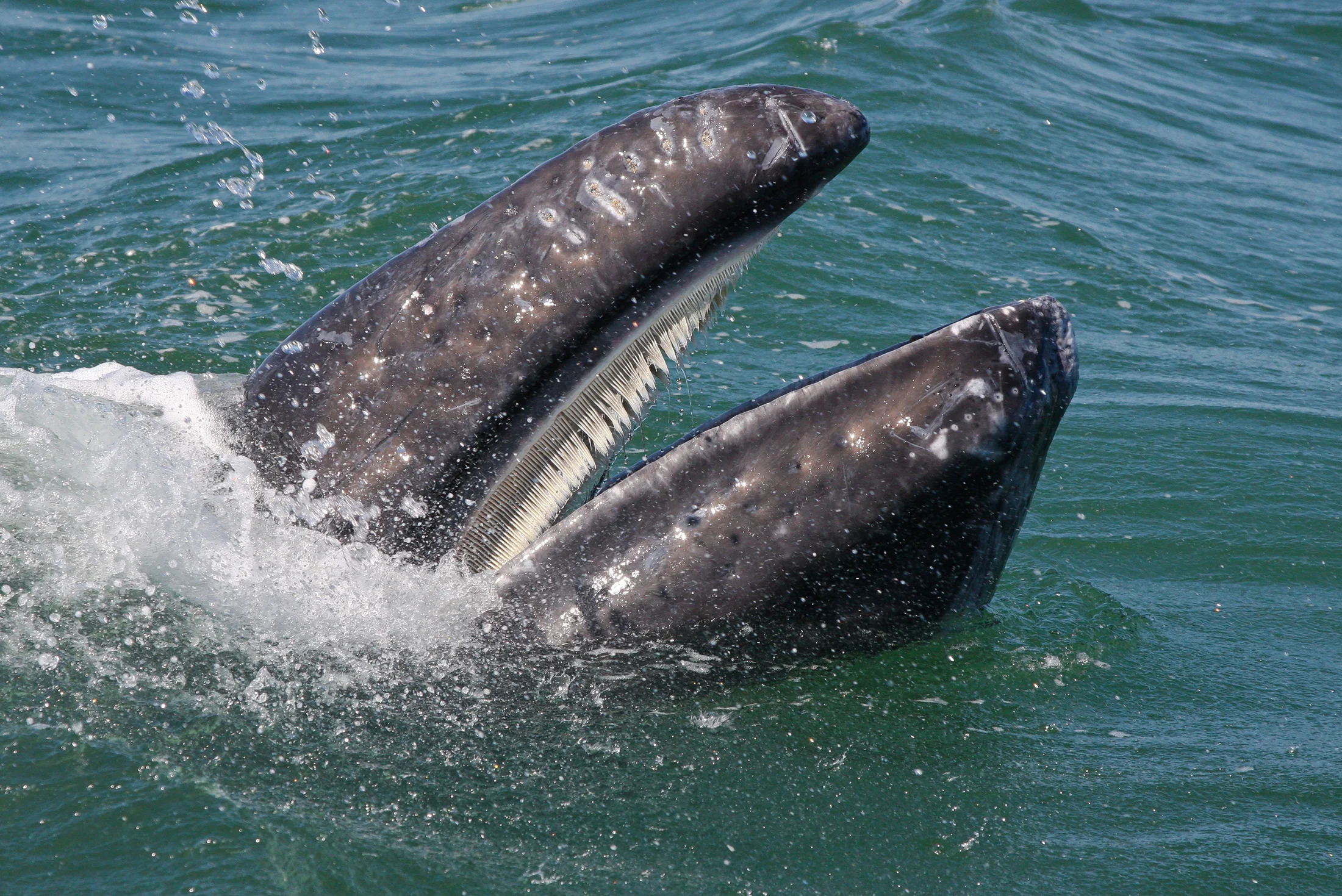
Daily Feeding Patterns
Whales follow remarkable feeding patterns that change with the seasons. These magnificent creatures spend four to six months of summer feeding in waters rich with nutrients. Each species has its own daily routine that changes based on the time of year and location.
Feeding schedules
Early summer sees whales feeding almost non-stop, as they hunt actively around the clock. Their patterns change to nighttime hours between 6 PM and 7 AM as the season moves forward. This shows how well they adapt to changes in prey availability and environmental conditions.
Blue whales feed in quick bursts that last one to two hours during daylight. They complete 24 dives over roughly 3.3 hours in an average feeding session. Fin whales make 19 dives in about 2.7 hours. These patterns match their prey’s movement, and whales stay longer in spots where they find more food.
Amount of food consumed
Whales eat an incredible amount of food. Scientists have discovered that baleen whales eat three times more than what they thought before. Here’s what their appetite looks like:
- Blue whales eat between 10 and 20 tons of food daily
- A blue whale’s single day meal packs 20 to 50 million calories
- Blue whales make up to 200 lunges into prey patches each day, while humpbacks might make 500 lunges
Scientists now know baleen whales eat between 5% to 30% of their body weight daily, much more than the earlier estimate of less than 5%. These giant creatures store huge energy reserves in their blubber, which makes up 27% of a blue whale’s total weight.
Their eating intensity changes throughout the year. They get about 83% of their yearly calories in just 90 to 120 days. This smart approach helps them build fat reserves for migration and breeding seasons. Their daily eating rate drops to about 0.4% of body weight during winter months.
Humpback whales in the Southern Hemisphere show this seasonal pattern clearly as they focus on finding food during the productive summer months. These patterns show how well whales can adjust their eating schedules and consumption rates to survive in their ever-changing ocean environment.
Whales show amazing diversity in their feeding behaviors. Blue whales consume tons of krill daily while killer whales use tactical hunting methods. These marine giants have evolved specialized features that make them skilled predators. Their sophisticated feeding systems, through baleen filtering or toothed hunting, reveal nature’s brilliant design.
The hunting techniques these creatures use never cease to amaze. Bubble net feeding shows their intelligence and teamwork. Lunge feeding proves their physical prowess. Their specialized features like echolocation and expandable throat grooves help them thrive in marine environments of all types.
Recent research shows whales eat substantially more food than scientists once thought. Some species eat up to 30% of their body weight daily during peak feeding seasons. Their feeding patterns sync perfectly with seasonal changes and support their long migrations and breeding periods. Without doubt, whales prove how marine life has become skilled at oceanic feeding.
Some FAQs about what do whales eat:
Do whales eat big fish?
Whales have diverse diets depending on their species. Some larger toothed whales, like sperm whales, consume big fish, while baleen whales primarily eat krill and small schooling fish. The diet of whales varies based on their location and prey availability, including areas where whales in Puerto Vallarta are commonly found.
Are whales carnivorous?
Yes, all whales are carnivorous and feed on marine life. Baleen whales filter-feed on krill, plankton, and small fish, while toothed whales hunt squid, fish, and even marine mammals. The diet of whales depends on their feeding mechanisms and habitat.
What is the main predator of whales?
The primary predator of whales is the orca, also known as the killer whale. Some orca pods specialize in hunting large whales, targeting young, weak, or injured individuals. In addition to orcas, humans have historically been significant predators of whales through commercial whaling.
Does a whale eat sharks?
Some large toothed whales, like orcas, are known to hunt and eat sharks. They have been observed preying on great white sharks and other species by targeting their liver, which is rich in nutrients. However, baleen whales do not eat sharks, as they primarily feed on smaller marine life.
What is a whale’s favorite food?
A whale’s preferred food depends on its species. Baleen whales, like blue whales, favor krill, while humpbacks consume small fish such as herring. Toothed whales, including sperm whales, often hunt squid, and orcas have a varied diet that can include fish, seals, and even other whales.
Do whales go to sleep?
Yes, whales sleep, but unlike humans, they must remain partially awake to continue breathing. They practice unihemispheric slow-wave sleep, where one half of their brain rests while the other stays active to monitor their surroundings and control breathing. This adaptation allows them to sleep while staying alert.
Do whales see humans as food?
No, whales do not see humans as food. Baleen whales feed only on small marine organisms, and toothed whales, including orcas, do not view humans as prey. There are no recorded cases of wild whales intentionally hunting or eating humans.
Why are orcas called killer whales?
Orcas earned the name “killer whales” because they are apex predators capable of hunting large marine animals, including whales. The term originates from early sailors who observed orcas attacking other whale species. Despite their name, orcas are highly intelligent and social animals.
What are 5 interesting facts about whales?
1. Some whales, like the blue whale, are the largest animals on Earth, growing up to 100 feet long.
2. Baleen whales can consume several tons of krill in a single day by filter-feeding.
3. Whales in Puerto Vallarta migrate thousands of miles yearly to breed in warm waters.
4. Sperm whales use echolocation to hunt deep-sea squid in total darkness.
5. Humpback whales are known for their complex songs, which can travel long distances underwater.
